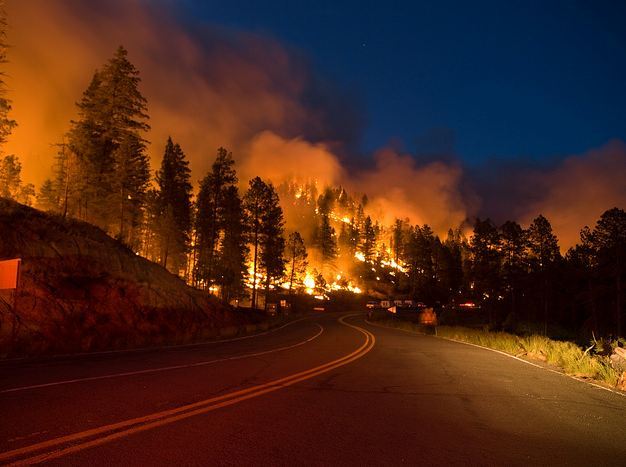Everything you need to know to protect you, your family and property during a wildfire
Knowing what to do in the event of a wildfire can help save your life and property. Learn how to protect you, your family and property during a rural fire with these essential wildfire safety tips.
If a fire approaches your home
Let the neighbors know;
Water walls, roof and 10 meters around house;
Close doors, windows and other openings, close blinds or shutters;
Remove furniture, tarpaulins or firewood near the dwelling;
If it is safe to do so, disconnect and remove the gas cylinders to a safe place;
Keep away from the windows anything that can burn and put wet towels in the crevices;
If you are not in danger, extinguish small outbreaks with water, earth or green branches;
Follow the instructions of the authorities.
If you get surrounded by a fire
Make your way to a shelter or collective refuge. If you are not near one, look for a preferably flat area with water or little vegetation;
Breathe close to the floor, if possible with a wet cloth, to avoid inhaling the smoke;
Cover your head and the rest of the body;
Use a damp cloth to protect your face from heat and smoke.
Communicate your situation to the authorities through 911.
In case of confinement within the building
Keep calm;
Keep the curtains and sofas away from the windows;
Close doors, windows and other openings that allow the entrance of sparks to the interior;
Place wet towels in the crevices of doors and windows;
Stay away from walls;
Look for shelter in the rooms at the opposite end of the dwelling relative to the side where the fire is approaching;
Wait for the fire to pass, and then check for fire outbreaks surrounding the dwelling and on your roof.
Communicate your situation to the authorities through 911.
If you are near a fire
Immediately call 911;
If you are not in danger and have suitable clothing try to extinguish small outbreaks with shovels, hoes or branches;
Avoid exposure to smoke, cover your mouth and nose with a damp cloth;
Protect the body from flames and heat with dry and long clothing;
Do not impair the actions of firefighters, forest firefighters and other rescue forces and follow their instructions;
Remove your vehicle from the access routes to the fire;
If you notice the presence of people with high risk behavior, inform the authorities.
Follow the indications of the authorities.
Have an evacuation kit prepared with:
First-aid kit;
Your usual medication;
Water and non-perishable food;
Personal hygiene products;
A change of clothes;
Radio, flashlight and whistle;
Money;
Family / friends contact list
Protect yourself from smoke
Keep smoke outside. Choose a room you can close off from outside air.
Set up a portable air cleaner or a filter to keep the air in this room clean even when it’s smoky in the rest of the building and outdoors.
Reduce your smoke exposure by wearing a respirator. Respirators are not made to fit children.
If you have heart or lung disease ask your doctor if it is safe for you to wear a respirator.
Avoid using candles, gas, propane, wood-burning stoves, fireplaces, or aerosol sprays and don’t fry or broil meat, smoke tobacco products, or vacuum.
If you have a central air conditioning system, use high efficiency filters to capture fine particles from smoke. If your system has a fresh air intake, set the system to recirculate mode or close the outdoor intake damper.
Pay attention to any health symptoms if you have asthma, COPD, heart disease, or are pregnant. Get medical help if you need it.
In case of Evacuation
Keep calm and obey the authorities instructions;
Help children, the elderly and people with mobility limitations;
Take your evacuation kit and identification documents;
Do not waste time collecting unnecessary objects and do not go back;
Close the doors and windows as you move out of the dwelling;
Take pets with you. Some evacuation centers do not accept animals. Check Petfinder’s Shelter Center or RedRover for information on local animal shelters and rescue groups.
Make your way quickly to the nearest shelter or collective refuge
Comply with authority indications.

